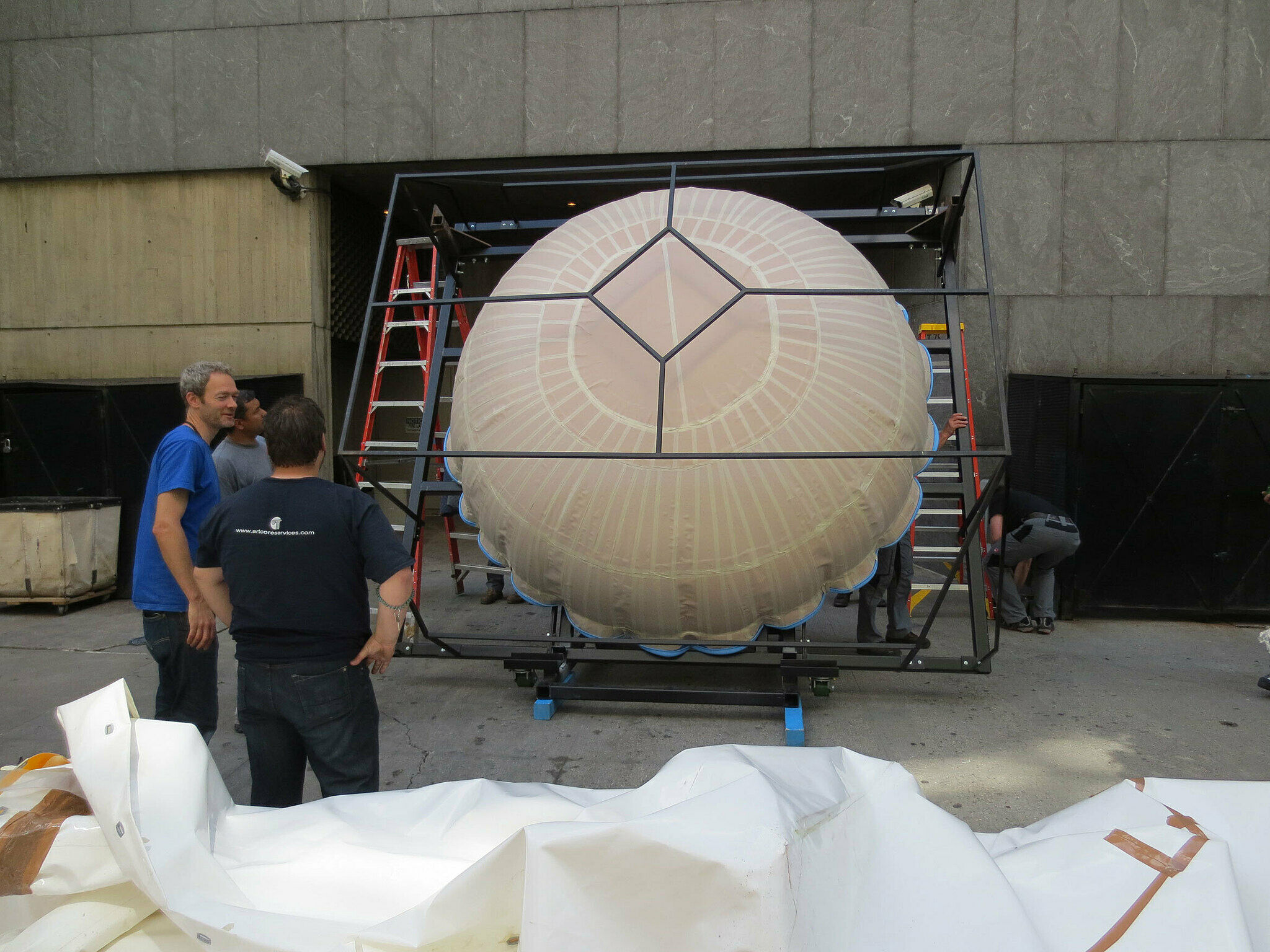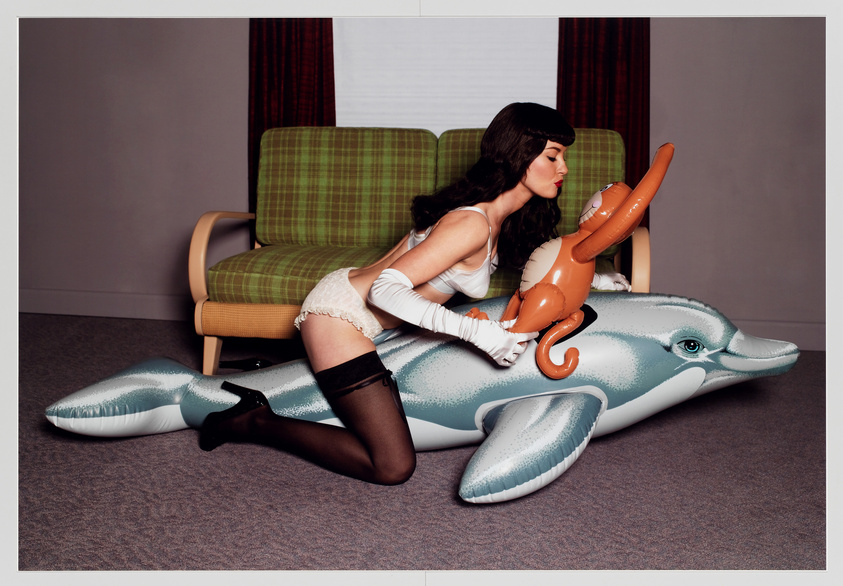Pinch Points: Joshua Rosenblatt on Installing Art, Uptown and Downtown
Oct 18, 2014
Over the course of his eighteen-year tenure in the art handling department at the Whitney, head preparator Joshua Rosenblatt has come to know the Museum’s uptown Breuer building inside and out. He has installed myriad permanent collection displays and temporary exhibitions, and has worked on every Whitney Biennial since 1983. As the Whitney prepares to move to its new building downtown and programming in the Breuer building concludes, Joshua looks back on the challenges posed by Jeff Koons: A Retrospective, and discusses features of the new building that promise to ease the load on art handlers.
The installation process for Jeff Koons: A Retrospective has been one of the most challenging in the Whitney’s history. Why is that?
It was challenging because of the scale of the work in the Breuer building—the scale of the work is large, but it's not unusual. The building has no loading dock, and there are a lot of pinch points: difficult areas in its architectural configuration that make it challenging to move art. There's a freight elevator accessible from 75th Street, but it only goes down—it doesn't go up—and it has a very low weight capacity. The good elevator is in the lobby, but the lobby has small, low, tight doorways. All of the art handlers who work here have measurements memorized that help them figure out which paths they have to take to fit things through the Museum.
Could you describe a particularly tricky installation?
Moon (Light Pink) is a good example. When we asked the fabricators to run a computer simulation to see if the work could fit into the Museum, they said, "maybe." So I sent one of my staff to Jeff Koons's studio to do a very old fashioned measurement and to make sure of all its shapes. He mapped it out on a piece of paper, and then we made a three-dimensional model from his drawing.
The piece is normally packed in a big steel cage: It would never fit through the building that way. We had to come up with some way of moving it safely, unpacked. The piece had to pass through two different elevators to make it to the gallery floor. It also had to travel at a single angle, since it weighs about 3,500 pounds and there's no way to adjust its height en route.
We designed a cart for it, and the design went through about twenty different revisions. After the cart was fabricated, we found that the piece was a fraction of an inch taller than expected. The fit was so tight inside our passenger elevator that we ended up having to lift the building's main electrical bus with wall jacks, and take the piece off of all its wheels. We were pushing 3,500 pounds of steel on concrete, but we cleared it safely in the end.
Are there things that you'll miss about the Whitney’s current building?
This is a Brutalist building. It's really quite tough—it's made of concrete and has great beams, and these features enable it to handle an extraordinary amount of weight. At one moment during the Jeff Koons installation, we were using two forklifts to bring Moon to the wall. The piece weighs about 3,500 pounds; one forklift is 10,000 pounds; and the other is 8,000 pounds. In the Breuer building, 25,000 pounds can travel across the floor, no problem. We've been able to do so much here over the years.
To have a good plot you need a little conflict. I'm hoping that we'll find a few challenges to keep things interesting in the new building.
What are some of the features you're most looking forward to in the new building?
The elevator is twice as large as the one in the Breuer building, which will make a huge difference. One piece in Jeff Koons: A Retrospective is a stone gorilla that weighs 16,000 pounds in its cage. To bring it to its place on the fourth floor, we had to put it in the passenger elevator and lift the car with chain hoists because the motor couldn't handle the weight. In the new building, we're going to have a 23,000-pound capacity elevator; this piece could roll into the elevator and go straight to the floor.
We'll also have an enclosed loading dock. For years, my staff has unloaded trucks on Madison Avenue, blocking traffic and weaving between passersby. Now we'll be able to back the truck into a loading dock that the public never sees.
What is the most engaging part of the process for you, installing this exhibition or any?
Laying out the shows, hearing the ideas of everyone working on the project, and seeing how it all comes together. The staff spends a great deal of time with each exhibition, and can become very attached to the artworks, or not. That's really the best part: We get to know the art in a way that one wouldn’t by spending a few minutes or even hours with it.





















